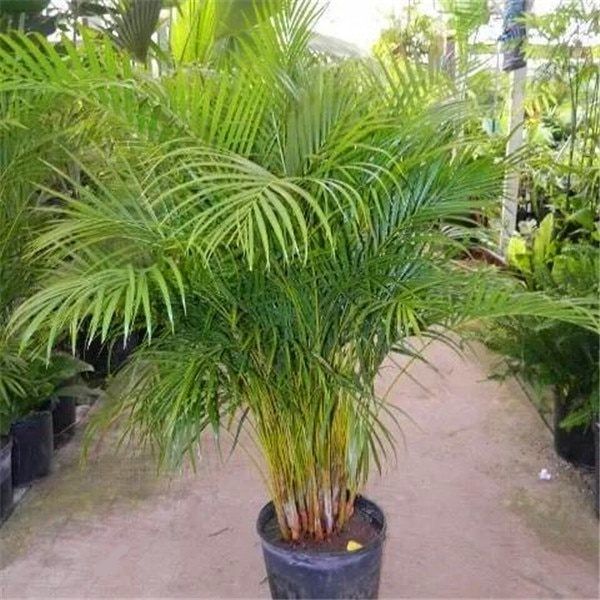
Bamboo Palm - Chamaedorea Seifrizii
Scientific Name and Overview
The Bamboo Palm (Chamaedorea seifrizii), also called the Reed Palm, is a graceful, clump-forming palm that resembles the structure of bamboo with its thin, cane-like stems and feathery, arching fronds. Native to the forests of Central and South America, this palm is highly valued for its decorative appeal, air-purifying qualities, and adaptability to indoor and outdoor settings.
Physical Description
· Height and Spread: Grows up to 1.8–3.6 meters (6–12 feet) outdoors, with a more compact size of 1.2–2.4 meters (4–8 feet) indoors.
· Fronds: Features delicate, pinnate fronds composed of narrow, lance-shaped leaflets. Each frond can grow up to 60–90 cm (2–3 feet) long, creating a lush, layered look.
· Stems: The slender, green, bamboo-like stems grow in clusters, giving the plant its characteristic name.
· Flowers and Fruits: Produces small yellow flowers on long stalks, often followed by black berries, though this is less common in indoor settings.
Cultivation and Growth
The Bamboo Palm is a low-maintenance plant that thrives in a range of environments:
· Climate: Best suited for tropical and subtropical climates (USDA zones 10–11). Can be grown indoors in cooler regions.
· Light: Prefers bright, indirect light but tolerates low-light conditions, making it ideal for offices and shaded areas.
· Soil: Requires well-draining, rich soil. A mix of peat, sand, and loam works well.
· Watering: Likes consistently moist soil but should not be overwatered. Allow the top inch of soil to dry out before rewatering.
· Propagation: Propagated through division of clumps or planting seeds.
Uses
Indoor Plant:
o Perfect for adding a touch of greenery to homes, offices, and lobbies.
o Recognized as one of the top air-purifying plants, ideal for improving indoor air quality.
Outdoor Landscaping:
o Frequently used in tropical gardens, shaded patios, and poolside areas.
o Can serve as a natural screen or hedge due to its dense growth habit.
Container Gardening:
o Thrives in pots, making it a versatile choice for decks, porches, and balconies.
Care and Maintenance
· Fertilization: Feed with a balanced, slow-release fertilizer during the growing season to promote healthy growth.
· Pruning: Remove brown or yellow leaves to maintain its appearance. Avoid cutting green stems as they contribute to the plant’s vitality.
· Pest and Disease Control: Prone to spider mites, mealybugs, and scale insects. Regularly inspect and clean the leaves to prevent infestations.
· Humidity: Thrives in high humidity but adapts well to average indoor conditions. Misting the leaves occasionally can help in dry climates.
Popularity and Distribution
The Bamboo Palm is widely cultivated in tropical and subtropical regions, with immense popularity as an indoor plant across the globe. Its ability to grow in low-light conditions and its elegant appearance have made it a favorite in urban spaces.
Benefits
· Air Purification: Listed by NASA as one of the best plants for removing indoor air pollutants.
· Aesthetic Appeal: Its bamboo-like appearance and dense foliage create a calming, tropical ambiance.
· Low Maintenance: Adaptable to a wide range of conditions, requiring minimal care.
Conclusion
The Bamboo Palm (Chamaedorea seifrizii) is a versatile and elegant plant that seamlessly fits into indoor and outdoor spaces. Its lush, bamboo-like stems and feathery fronds provide a tropical touch to any setting, while its low-maintenance nature and air-purifying properties make it a practical choice for plant enthusiasts. Whether used as a decorative centerpiece or a natural screen, the Bamboo Palm is a timeless favorite for homes, offices, and gardens.
